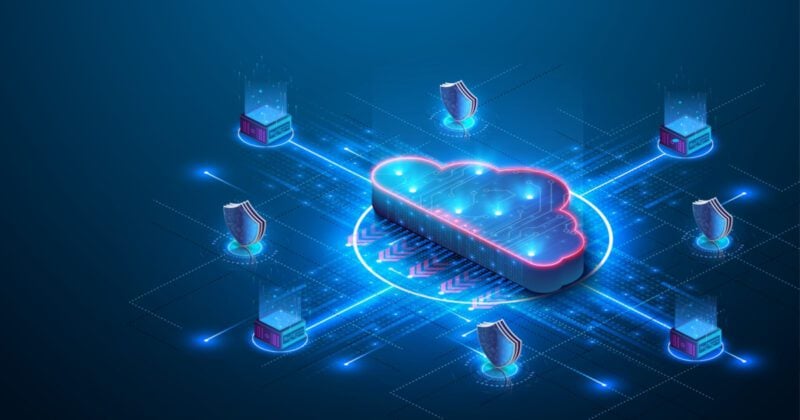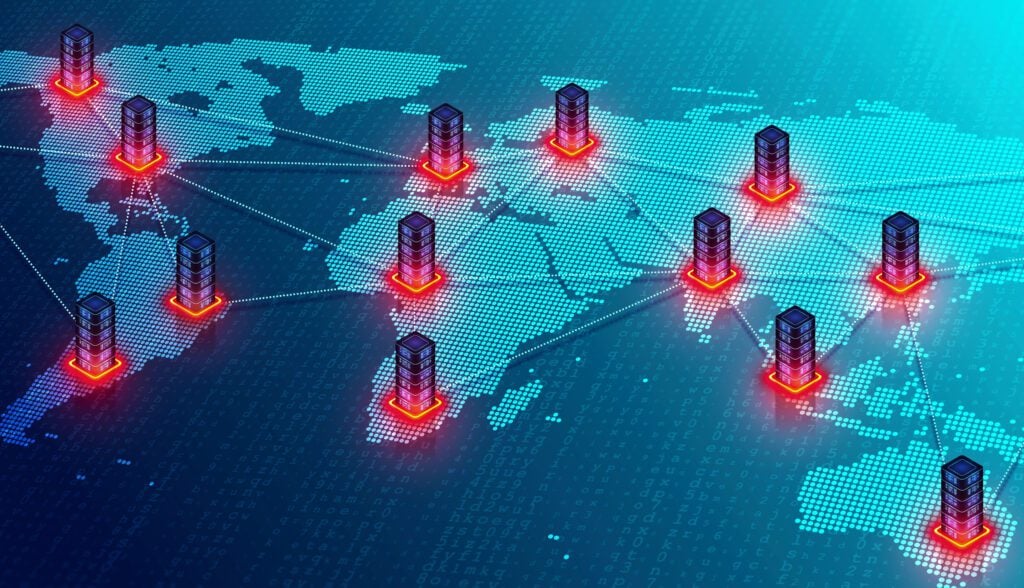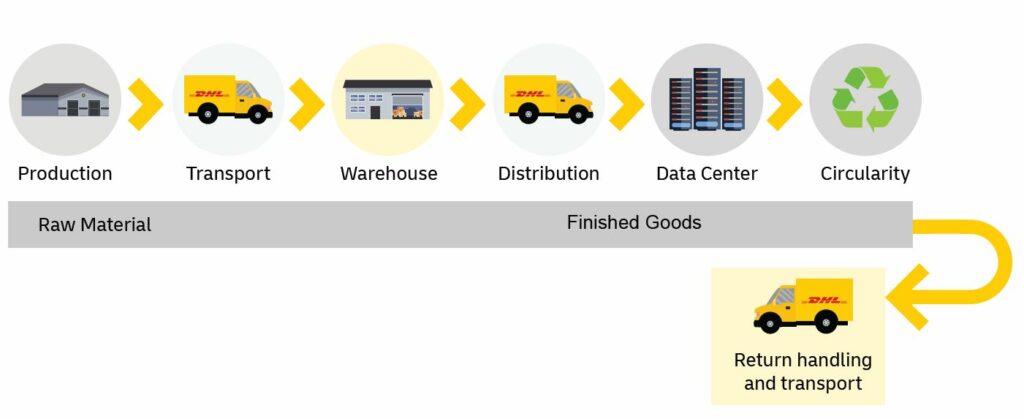
Are edge data centers the go-to solution for mega cloud support?

For years, data centers have been the key infrastructure that has supported the explosive growth of the Internet. Technological advancements have come a long way, and today’s data centers have significantly evolved from the massive multi-hectare behemoths that powered Web 1.0
In the era of e-commerce, online gaming and faster mobile networks, small, powerful, and cost-efficient edge data centers are the cornerstone for cloud-based solutions.
With Asia Pacific’s digital growth expected at 40 percent CAGR through 2025, the accelerated deployment of edge data centers is estimated to be four times faster than the expected growth of digital services.
However, the effective scaling of edge data center networks still meets many challenges, and much of it hinges on a robust supply chain to meet the geographical, deployment or maintenance needs.
Navigating legislative challenges of cross-border deployment
Edge data centers operate on a hub and spoke model, creating an interconnected network of localized smaller and larger facilities to split the load. These micro facilities are usually placed at the edge (hence, the term) of where the end users are. This reduces the distance and time for data packets to be transmitted and received.
From a network provider’s perspective, optimizing their network for users is also an essential feature. With over 400 million 5G connections expected in 2025 for the Asia Pacific region, edge data centers are crucial for scaling the high-speed network rollout.
The key challenge, however, is the deployment across various borders, especially in developing markets, which are often rife with regulatory requirements that could put a hard stop to the project. This brings forth the need to have an efficient cross-border service logistics solution.
“Besides tapping into an international transportation network, edge data centers should also consider logistics providers familiar with customs regulations to ensure a smooth end-to-end delivery and setup,” said Deepali Gulati, Vice President, Technology, DHL Supply Chain Asia Pacific.
Priming the edge network for sustained scale-up capacity
The key benefits of edge data centers are their flexibility and potential for growth. Depending on the end users’ growth and needs, the hub and spoke model can expand rapidly, adapting to an increase in remote working capabilities or the proliferation of automation.
Getting the data centers into the country is just the first step. The next consideration is the deployment speed, a crucial element in keeping the data center running smoothly. A strong end-to-end supply chain management, from streamlining multiple logistics partners to creating visibility across the whole chain, is essential to keep the engine moving. “As more edge data centers are deployed to maintain growth and uptime, it takes a well-connected logistics network to keep up with the pace,” noted Gulati.
As the network grows wider, data center setups, especially in developing countries, will benefit from ready-to-go logistics networks that can provide better supply chain efficiency, thus driving down scalability costs.
“As a start, a streamlined, end-to-end supply chain with visibility and control as its focus will match the increasing need for customers to scale up data centers rapidly,” said Lewis Tan, Senior Director, Technology, DHL Supply Chain Asia Pacific. “Beyond the initial setup, many data center operators grapple with significant challenges in balancing power efficiency, capacity utilization and cost management. An efficient service parts management is required to upkeep and maintain the growing edge data center network with an infrastructure to scale up the operations and react to emergencies.”
Hence, operations technology, including supply chain management, will become increasingly integrated with IT to achieve transparency and efficiency with greater security, visibility and control 24/7 on a real-time basis to prevent disruptions.
Calibrating toward infrastructure resilience with zero downtime
Data centers are like the heart of an always-connected world. To put things into perspective, it was estimated that a total of 94 zettabytes (21 zeroes after 94) of data was generated and consumed by the end of 2022. Our daily activities, from social media browsing to online grocery shopping and the Internet of Things, have contributed to data transfers that vary from mere megabytes to gigabytes.
This has clearly highlighted that any potential downtime for edge data centers will have dire consequences, which could translate into a costly affair. In 2022 alone, 60 percent of data center operators reported an outage; some are costly to the point of crossing the million-dollar threshold.
Data center resilience is becoming increasingly critical, with more companies focusing on building resilience, starting from site-level setup to the larger supply chain. Data center capacity redundancy for contingency plans is expected to increase amidst balancing cost considerations. However, uncertainty in data center supply chains across geographies due to geo-political challenges and equipment shortages is expected to complicate rollouts and maintenance.
To reinforce the uptime and health of edge data centers, a foundation of strong, high-quality supply chain management platform and partners with the ability to execute effectively are critical to an agile and robust data center operation. Data center supply chains need to be enabled with robust analytics to use real-time and trusted data to manage risks effectively, enable contingency planning and generate predictive analytics.
“Data center operators are aware of the challenges of maintaining the data centers health and efficiency. Thus, they have a very clear focus on equipping their operations with a high-quality and future-focused supply chain management system to react to ensure the resilience of their data centers,” said Tan.
The cornerstone to a significantly greener data center ecosystem
Edge data centers are here to stay with the continuing growth of high-speed networks and cloud-based services.
But the benefits for edge data centers go beyond improved network performance, optimized cost, and opening up new doors for cloud-based services. It has the potential to be a more sustainable operation compared to its predecessor.
These micro centers require less power, and by proxy, fewer cooling measures to keep them running. Paired with local, renewable energy sources, edge data centers are more likely to produce fewer carbon emissions.
With sustainability inevitably becoming a central agenda of data center operators, new standards are emerging to establish more stringent sustainability tracking and reporting practices However, many data center operators are unprepared for mounting sustainability requirements and regulations.
“The key question is not how many more edge data centers will be deployed. It’s how quickly companies can scale up sustainably to meet consumers' growing data needs and stricter regulatory requirements,” says Gulati.
Among increasing initiatives to tap digital solutions to accelerate ESG objectives, including energy and utility monitoring, optimizing the supply chain will also need to form an integral part of ESG plans. Companies will be putting increased emphasis on partners that can match and reduce their carbon footprint and are at the forefront of green initiatives.
With a continual upward trend to ride on, edge data centers can and will thrive with rapid deployment, robust resilience, and most importantly, a well-connected supply chain network.
Critically, it is vital to plan for contingencies with a strategic expansion roadmap in tandem with a reliable logistics partner to stay well ahead of challenges along the way.
ALSO WORTH READING













 English
English